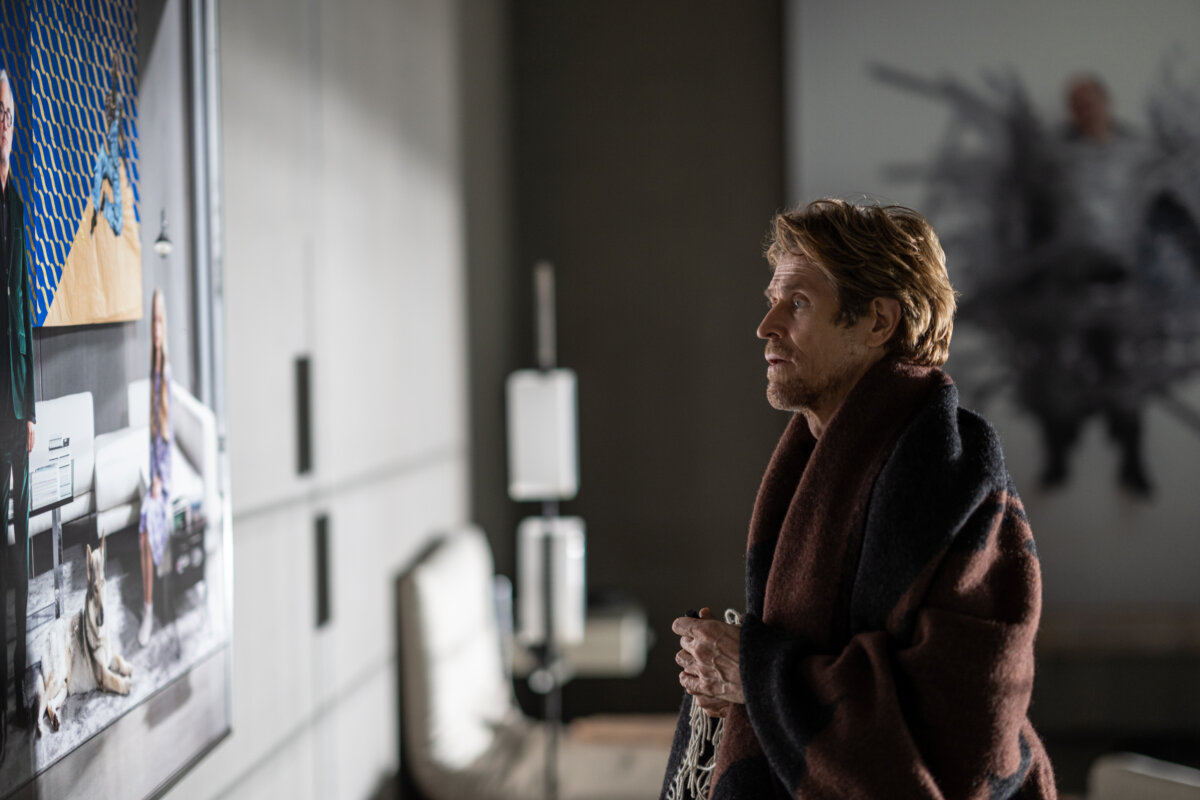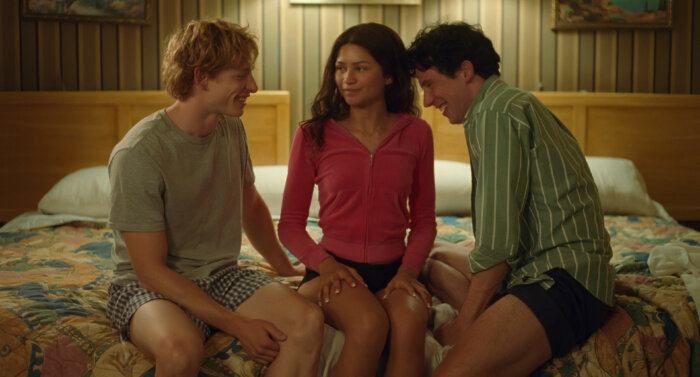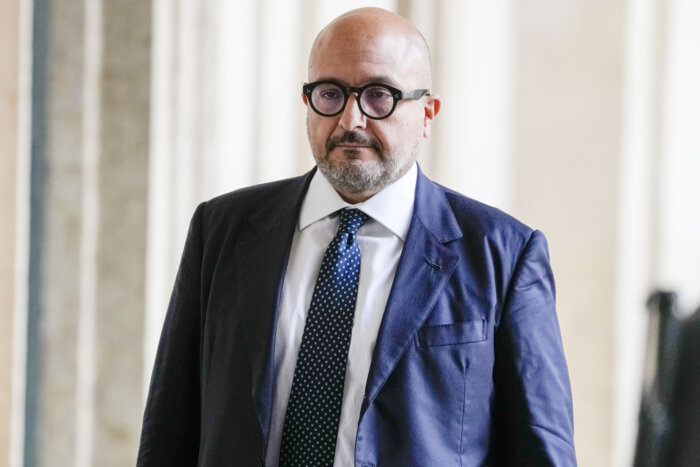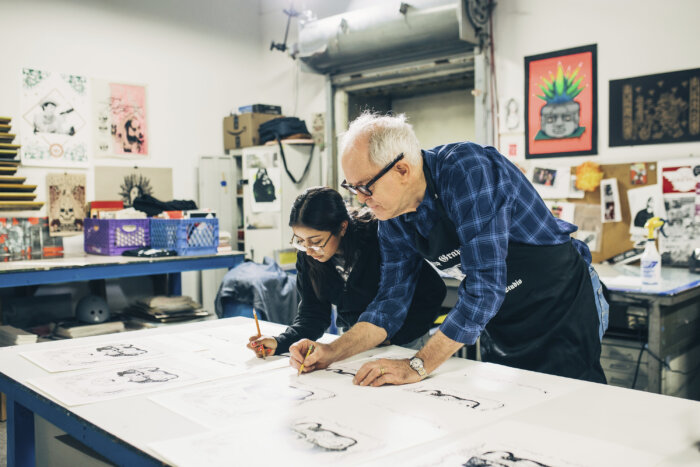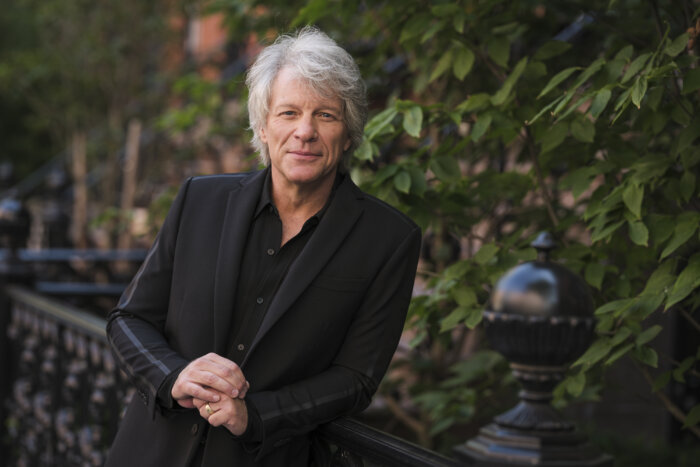In director Vasilis Katsoupis’ feature debut, ‘Inside’, Willem Dafoe takes on the role of Nemo. As an art thief, his world is surrounded by the culture of that medium, but art takes on a different meaning when Nemo unexpectedly is trapped inside a penthouse apartment while on a heist. With the film focused on Dafoe’s character and his circumstances in isolation, there was a lot to chat about with the actor in terms of experience, set, and how his character was born through techniques he uses in almost all of his projects.
To dive a little deeper, Willem Dafoe sat down to chat more about his time making ‘Inside,’ and just how organic and hard-working it was both on and off of the set.
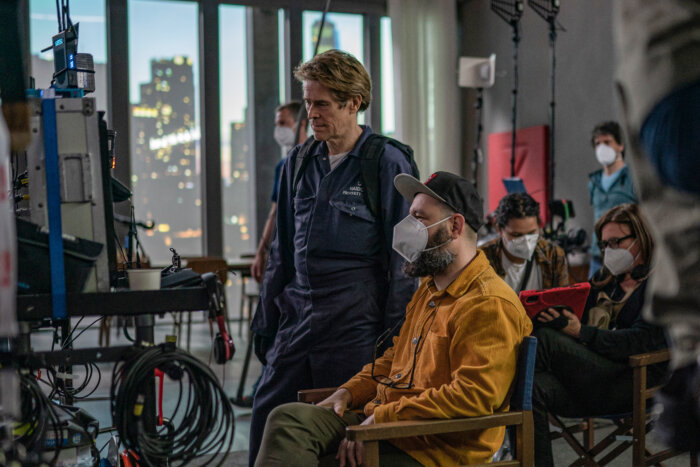
What attracted you right to this project?
The whole premise, and then it was just a matter of meeting the director and the producer and seeing how they were approaching it… making sure that the collection was legit and getting a feel for the director— because he had never done a feature before. So you’re always nervous when you have nothing to look at. But, we started a relationship and there was a long development period, and I liked the guy more and more [as] I got to know him.
Since the film centers on just your character, what were some of those early conversations with Vasilis Katsoupis like?
We talked very little about Nemo—we talked about the set, we talked about the art. Both of us had no interest in talking about Nemo because [he] was going to be born when we shot the movie.
So how was that filming process then—was there a lot of improvisation?
There was a very strong script, but when we got in the space, we had to adjust some things. And also between the big events, there [was] a lot of time that we had to deal with the condition he was in— the solitude and the moments when big events didn’t happen. The big events are written in the script, but all the things between, we had to connect the dots, really.
It’s hard sometimes for people that aren’t actors to understand—but it doesn’t really help you if you decide who the character is. The character is any more than you really decide who you are, you know, when you’re doing things, you concentrate on what you’re doing and who you are is an expression of what you do. And that’s almost always my approach. In this film, certainly, it was my approach to dedicate myself to what he has to do and do those things and have an experience, and then in experiencing that the character is born.
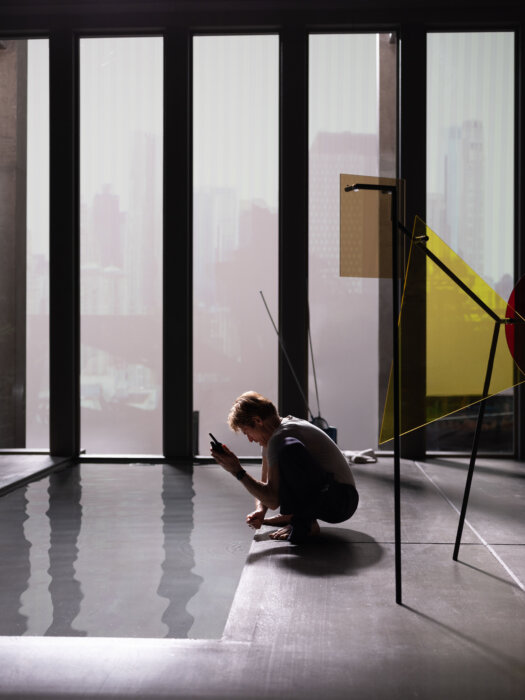
‘Inside’ was filmed in chronological order. What was the benefit with filming it this way?
That was very important, it was essential. And we had no other choice, it was the only way to do it because clearly it’s a set and once we degrade it, there’s no going back. You can’t repair what’s broken and the whole story points toward the slow degradation of this place. And by the end, particularly without giving any spoilers, can you imagine going back to the first scene after one of the scenes at the end? It’s so impossible for me.
We decided very early on that we didn’t want to get involved with hair length and beards and all that stuff—we had to accept that we didn’t even know exactly how long he was there. So we decided just the first day of shooting, I would stop cutting my hair. I’d let my beard grow, I’d let myself go a little bit, maybe lose a little weight, let the hard work work on me. You know, make sure I didn’t go out and have a couple of beers after work—there was none of that.
I was wondering what the atmosphere would be like for you working on this film with its premise of being in isolation.
They were pretty full days—we shot it at a sound stage in Cologne, Germany because it was the tallest, and it had the highest ceilings of any sound stage in Europe. We needed that kind of height to build the penthouse. I was very concentrated on the movie and didn’t have much of a life outside of [it]. You work 12 hours, and you’re the only actor and it’s always on you, and you’re not going to a trailer. You’re entering in the morning and you’re on that set in the dark doing things till 12 o’clock. You get home, you eat something, you go to bed.
And what about the art—it plays a huge role for Nemo, and there’s a lot of art shown in the film. How was it all selected and did it have meaning?
The collection was very carefully chosen by a gallerist, Leonardo Bigazzi. He had lots of relationships with artists. There were some established artists, some emerging artists and pieces. He could speak better to this because I really had no hand in selecting them, although I was very happy with the selection. Some pieces were just visually really attractive that he really liked. Some pieces had a political element, some pieces had something that reflected Nemo’s situation….there’s the one with [a] man bound by the duct tape—it speaks to his situation.
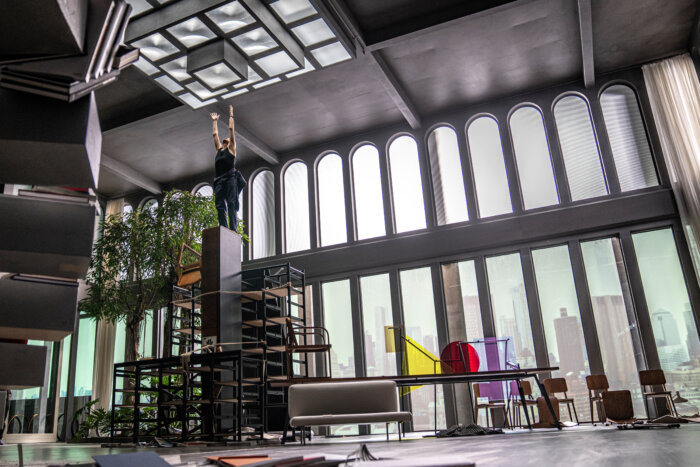
And what do you think people will take away from ‘Inside’? It’s a thriller, but it seems to bring up much deeper questions.
I hope what you say is true, and I think because there’s this thriller aspect to it, it satisfies people that crave a narrative. But how it’s positioned and with the premise, the situation, elements of art, and the luxury, and this guy trapped—it all evokes a lot of fundamental questions about our relationship to art, what we need, and our relationships to luxury. Many things aren’t forced, they aren’t pushed in your face, but they’re inevitable. I like the idea that the audience kind of makes their own story with Nemo as he’s going through it, much in the same way.
When you see him deal with his obstacles and the challenges he has, you’re with him and you kind of judge his behavior. The audience might participate in that way in their heads, and then later, as the film really starts to find its rhythm, you start to wonder about some of these elemental, almost existential questions.
‘Inside’ releases in theaters March 17.



